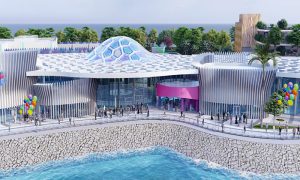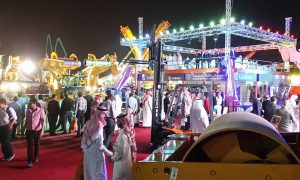Retail sector in Riyadh and Jeddah to grow significantly says KPMG
Growth will be driven by focus on diversifying and strengthening KSA economy, as well as consumer behaviour and urbanisation

Increasing urbanisation, favorable demographics and westernised consumption patterns will see the retail sector in Riyadh and Jeddah grow significantly in the coming years, according to a report by KPMG Al Fozan & Partners.
The report stated that Saudi’s focus on developing its entertainment and tourism sectors, as well as its plans to become a global economic powerhouse and an international business hub are transforming Riyadh and Jeddah into world-class retail destinations.
In Riyadh, the total gross leasable area (GLA) in 2018 was found to be in excess of 2.1m sqm with 320,000sqm of additional retail space projected to be delivered across 2019, the report said. The total retail space in the capital city is expected to reach up to 2.7m sqm by 2021.
The report also said that although the retail sector remains strong following the introduction of VAT in January 2018, lower consumer purchasing power has led to a decrease in rental rates by 5% and 10% across different areas of the city. Rents are expected to remain under pressure until the end of 2019.
KPMG Al Fozan & Partners added that rental rates continue to be higher in regional and super-regional malls compared to community malls, as a result of higher footfall. Average vacancy rates rose to 15% across all mall categories by 2018-end, as per the report.
“Although a high amount of retail space is expected to enter the market, there is still demand for retail space in Riyadh. This demand stems from the increasing number of international brands willing to open stores since the opening up of the economy and growing awareness of international brands within the general public,” explained Firas Hassan, head of Real Estate at KPMG AL Fozan and Partners.
With regards to Jeddah, the report showed that demand for retail space is rising on the back of a strong population base, elevated disposable income and changing lifestyles. Retail supply was found to be led by super-regional malls and was estimated at 1.41m sqm.
“The market is anticipated to witness the delivery of nearly 400,000sqm in the coming two to three years given the delay in under construction projects, which were scheduled to be delivered in 2018, coupled with other forthcoming projects,” added Hassan.
According to the report, rentals for regional malls registered a decline of four to five percent as a result of decreasing demand for that asset class. The report also said that new upcoming supply (if delivered on schedule) is likely to put pressure on the rental rates.
“With new residential communities being set up, we expect the new population in the area to feed into the demand for retail space. We still see an opportunity in developing super-regional malls that can serve as destination malls, equipped with advanced entertainment facilities, and vast range of F&B offerings,” Hassan concluded.











